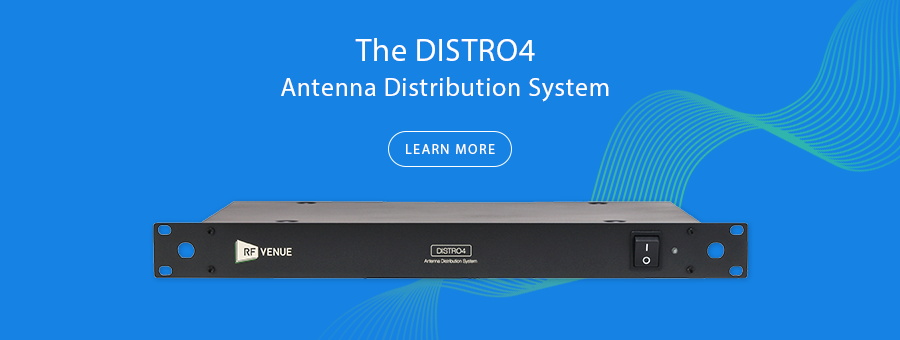- Products
- All Products
- RF PA Extension Kit
- Wireless Microphone Upgrade Packs
- In-Ear Monitor Upgrade Packs
- Wireless Microphone Antennas
- Wireless In-Ear Monitor Antennas
- Antenna Distribution for Microphones
- Antenna Combiners for In-Ear Monitors
- Multi-Zone Antenna Combiners
- Spectrum Tools
- Accessories, Cables and Parts
- Solutions by Venue
- Resources & Training
- Performance Tools
- About Us
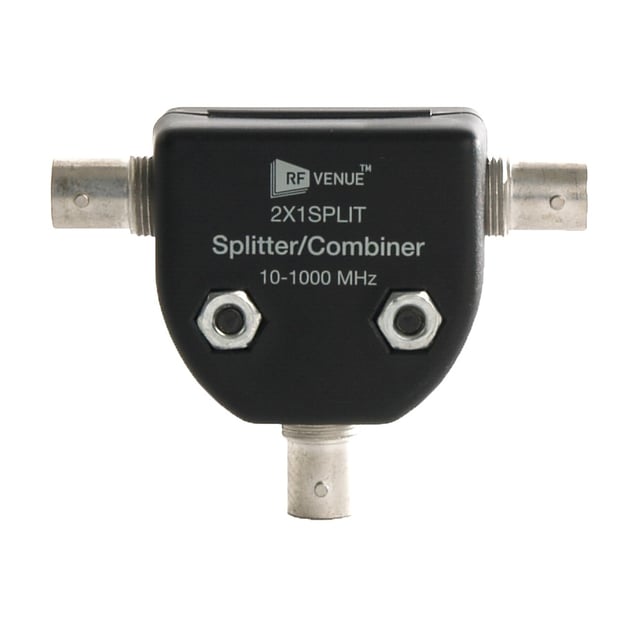
Here are three simple and low-cost wireless audio antenna distribution configurations using the RF Venue 2x1SPLIT passive splitter/combiner—a versatile accessory we’ve used for years to build affordable wireless racks in conjunction with our antenna combiners and distributors.
8 Channel IEM combinerThis setup effectively creates an eight channel combiner for much, much less than a standalone active 8 channel transmitter combiner.
Route both outputs of two four channel IEM transmitter combiners through a single passive 2X1SPLIT, and finally into a helical antenna.
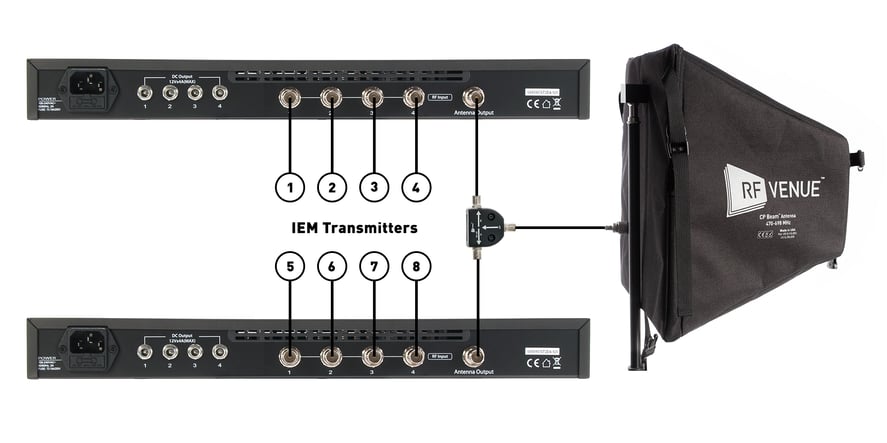
Were we building this kit out for a customer, it would look like this:
- (2) COMBINE4
- (2) RG8X jumper
- (1) 2x1SPLIT
- (1) 25’ RG8X
- (1) CP Beam helical antenna
There are some engineers who prefer to use two or more four channel combiners with dedicated antennas, as a measure of redundancy. That’s fine, but remember to space active antennas a good distance apart to avoid near-field interactions that may result from antenna farming.
Remember any time you add additional transmitters you will be adding additional IM. In the case illustrated above the CP Beam antenna is adding 10dB to the signal strength so switching to this should allow you to turn down your transmit power to half power or preferably less.
Diversity Fin DAS
Here’s a request we get all the time: “we want the same wireless microphone to function across two or more rooms.”
We use two Diversity Fins and two 2X1SPLITs to accommodate those requests.
In effect we create a simplified DAS, or distributed antenna system. In a DAS, talent freely wanders through a series of coverage “zones” without fear of losing reception. Signal sent to the same receiver(s) or different receivers depending on the engineer’s design.
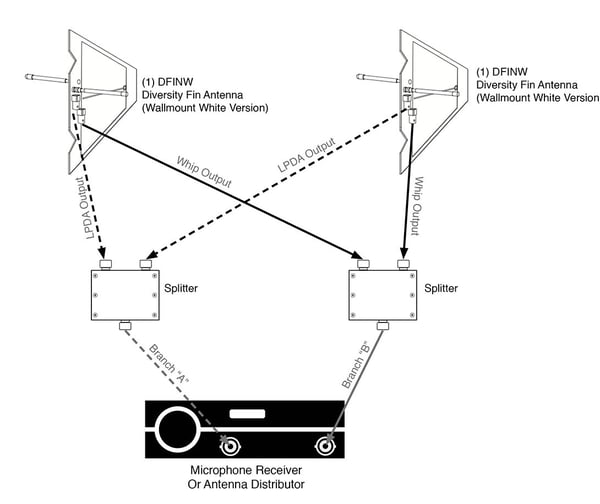
Alternately an effective ceiling mount using CX22 antennas would look like this:
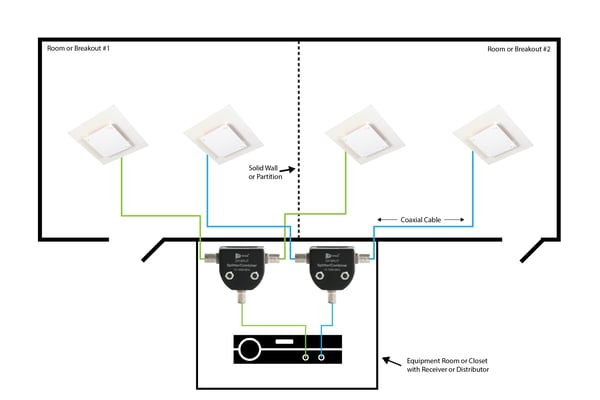
When more zones are needed the setup gets more complex. But our 4Zone combiner is an easy to use and economical solution. Here are some tips for using the 4zone system
Spectrum analyzer "wiretap"
If you have a spectrum analyzer, you can “tap” your antenna feed or, even better, one of the outputs on an antenna distributor, using the 2X1SPLIT.
Simply place the splitter in-between one branch of one output of a distributor. Feed one of the splitter’s outputs to the analyzer, and return the other output to the receiver.
The goal is visualize RF from the perspective of the receivers. The nearer the tap is to the final destination of the signal, the better the data the analyzer can retrieve for you, since it is seeing what the system is seeing.
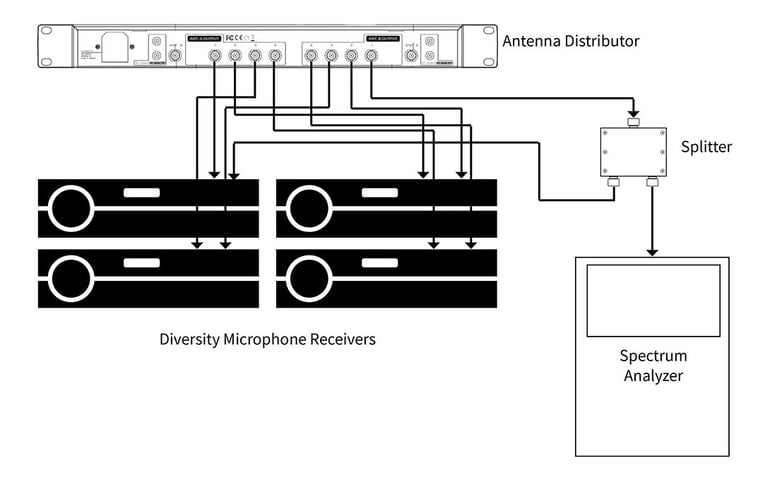
This setup is great for taking a peek at RF activity from the system’s perspective, and for troubleshooting RF where an ambient scan has not revealed anything, but it is generally not recommended for routine operation.
The splitter adds one additional point of failure to the signal chain, and poaches a few dB of amplitude, changing the receiver’s interpretation of the two diversity signals.
If you want to do a wiretap during actual performances it’s much better to tap from an unused output on a distro, or on the cascade output of the final distro in a daisy-chain.
Alex Milne
Alex Milne was Product Marketing Manager and Digital Marketing Manager for RF Venue, and a writer for the RF Venue Blog, from 2014-2017. He is founder and CEO of Terraband, Inc., a networking and ICT infrastructure company based in Brooklyn, NY., and blogs on spectrum management, and other topics where technology,...
More from the blog
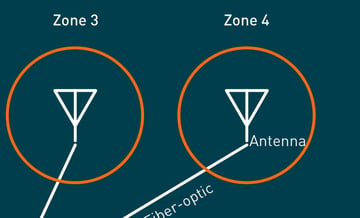
COMBINE4 Transmitter Combiner
What Is Antenna Distribution?
4 min read
| December 15, 2014
Read More

COMBINE4 Transmitter Combiner
Contemporary NORTHchurch.tv Improves Wireless with Antenna Distribution
4 min read
| February 7, 2015
Read More
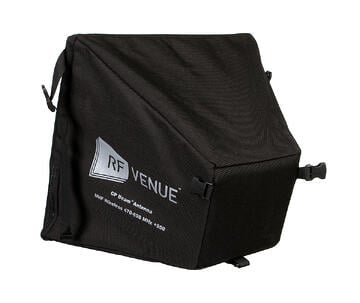
CP Beam Antenna
Visualizing Directional and Nearfield Antennas in Central Park
1 min read
| April 8, 2015
Read More
Subscribe to email updates
Stay up-to-date on what's happening at this blog and get additional content about the benefits of subscribing.

